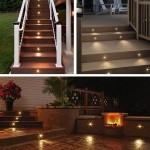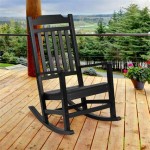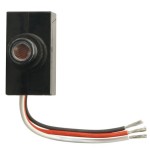Best Solar Ground Lights for Outdoor Use: A Comprehensive Guide
Solar ground lights offer an energy-efficient and aesthetically pleasing way to illuminate outdoor spaces. These lights harness solar energy during the day to power themselves at night, providing a sustainable and cost-effective lighting solution. Choosing the best solar ground lights for a particular outdoor area requires careful consideration of several factors, including light output, durability, battery life, and overall design. This article will delve into these key aspects to provide a comprehensive guide for selecting the optimal solar ground lights for various outdoor applications.
Brightness and Light Output: Understanding Lumens and Light Coverage
One of the most critical factors to consider when selecting solar ground lights is their brightness, typically measured in lumens. Lumens indicate the total amount of visible light emitted by a light source. For ground lights, the required lumen output depends on the intended purpose. For example, pathway lighting might require a lower lumen count than lights intended to illuminate a larger garden area or highlight specific architectural features. Lights with 10-20 lumens are generally sufficient for subtle pathway illumination, while brighter options exceeding 100 lumens might be needed for larger areas or enhanced security.
Besides lumens, it's important to consider the light coverage area. Some lights emit a focused beam, while others offer a wider spread. The beam angle, which describes the angle at which the light is dispersed, is crucial to understand the coverage area. Wider beam angles are suitable for general illumination of a broader space, whereas narrower angles are better for accent lighting or directing light onto specific objects.
Furthermore, the color temperature of the light affects the ambiance. Measured in Kelvin (K), color temperature indicates the warmth or coolness of the light. Warmer light (around 2700K-3000K) produces a soft, yellowish glow, creating a cozy and inviting atmosphere, which is often preferred for residential gardens and pathways. Cooler light (around 4000K-6000K) produces a brighter, whiter light, which is more suitable for security applications or highlighting features like plants. Consider the desired aesthetic and functionality when choosing the color temperature.
Durability and Weather Resistance: Choosing Robust Materials
Outdoor ground lights are exposed to various weather conditions, including rain, snow, heat, and direct sunlight. Therefore, durability and weather resistance are paramount considerations. The materials used in the construction of the lights significantly influence their ability to withstand these elements. Stainless steel, high-quality plastic, and cast aluminum are common materials known for their robustness and resistance to corrosion.
The Ingress Protection (IP) rating indicates the level of protection a device offers against solid objects and liquids. For outdoor ground lights, an IP rating of IP65 or higher is generally recommended. The first digit represents protection against solid objects (dust), and the second digit represents protection against liquids (water). An IP65 rating means the light is protected against dust and water projected from a nozzle, while IP67 provides protection against dust and temporary immersion in water.
In addition to the materials and IP rating, consider the structural design of the light. Look for lights with sealed components and robust construction to prevent water from entering and damaging the internal electronics. Consider the thickness and quality of the lens, as it also plays a role in weather resistance and light dispersion. A durable lens will resist yellowing or cracking from prolonged sun exposure. Choose lights designed to withstand the specific climate conditions of the location where they will be installed.
Battery Life and Solar Panel Efficiency: Maximizing Performance
The performance of solar ground lights hinges on their battery life and the efficiency of their solar panels. The battery stores the energy harvested from the sun during the day, which then powers the light at night. The capacity of the battery, measured in milliampere-hours (mAh), determines how long the light can operate on a full charge.
Different battery types are commonly used in solar ground lights, with Nickel-Metal Hydride (Ni-MH) and Lithium-ion (Li-ion) being the most prevalent. Li-ion batteries generally offer higher energy density, longer lifespan, and better performance compared to Ni-MH batteries, but they may also come at a higher cost. Ensure the battery is replaceable to extend the lifespan of the light.
The size and efficiency of the solar panel directly impact the amount of energy it can capture. Larger solar panels typically harvest more sunlight, allowing for faster charging and longer operating times. The efficiency of the solar panel refers to how effectively it converts sunlight into electricity. Monocrystalline solar panels are generally more efficient than polycrystalline panels, though they may be more expensive. Choose a location with ample sunlight for optimal charging. The angle at which the solar panel is positioned can also affect its charging efficiency. Consider lights with adjustable solar panels to maximize sunlight exposure.
Some solar ground lights come equipped with features like automatic on/off sensors, which turn the lights on at dusk and off at dawn, conserving battery power. Others offer multiple brightness settings, allowing users to adjust the light output based on their needs and further extend battery life.
Installation and Design Considerations: Integrating Lights into the Landscape
Ease of installation is another important factor. Most solar ground lights are designed for simple installation, requiring minimal tools or expertise. Typically, they involve staking the light into the ground or screwing them onto a surface. Consider the type of soil or surface where the lights will be installed and choose lights with appropriate mounting options.
The aesthetic design of the solar ground lights should complement the overall landscape. Lights are available in various styles, shapes, and finishes, from modern and minimalist to traditional and ornate. Consider the existing architectural style and garden design when selecting lights to ensure a cohesive look. Finishes like brushed stainless steel, bronze, or black can add a touch of elegance and sophistication to outdoor spaces.
The positioning of the lights significantly affects their impact. Strategically placed lights can highlight key features, create visual interest, and enhance the overall ambiance. Use lights to illuminate pathways, accent trees and shrubs, or create a welcoming entrance. Consider the shadows cast by the lights and how they contribute to the overall effect. Experiment with different placements to achieve the desired look and feel. Avoid placing lights where they might be obstructed by foliage or other objects, which can impede their charging capacity.
Consider the safety aspect. Ensure that the lights are placed in locations where they will not pose a tripping hazard or obstruct the path of pedestrians or vehicles. Reflective surfaces or nearby water features can enhance the effectiveness of the lights by reflecting their beams, thereby increasing the overall illumination of the area. Consider the potential impact of the lights on wildlife. Avoid using excessively bright lights or placing them near sensitive habitats to minimize disruption.
Regular maintenance, such as cleaning the solar panels and replacing the batteries as needed, is essential to ensure the long-term performance of solar ground lights. By carefully considering these factors and choosing lights that meet specific needs and preferences, homeowners can create beautifully illuminated and energy-efficient outdoor spaces. Proper placement, regular maintenance, and an awareness of the surrounding environment will further enhance the effectiveness and longevity of these sustainable lighting solutions.

The Best Solar Landscape Lights Of 2024 Popular Science

2024 Best Seller Solar Powered Ground Lighting Ip65 Stainless Steel Led Lights Outdoor Garden Light Made In Com

The Best Solar Path Lights Of 2024 According To Testing Bob Vila

5 Best Outdoor Solar Lights Of 2024 Reviewed

5 Best Outdoor Solar Lights Of 2024 Reviewed

Solar Lighting Commercial Landscape Elite Designs

5 Best Outdoor Solar Lights Of 2024 Reviewed

Best Solar Garden Lights Guide 2024 Updated

Best Solar Lights On Test In 2024 Bbc Gardeners World Magazine

The Best Solar Landscape Lights Of 2024 Popular Science








